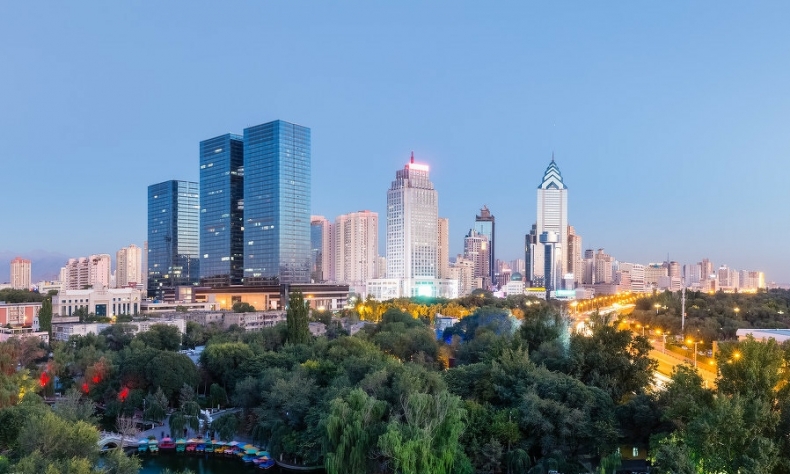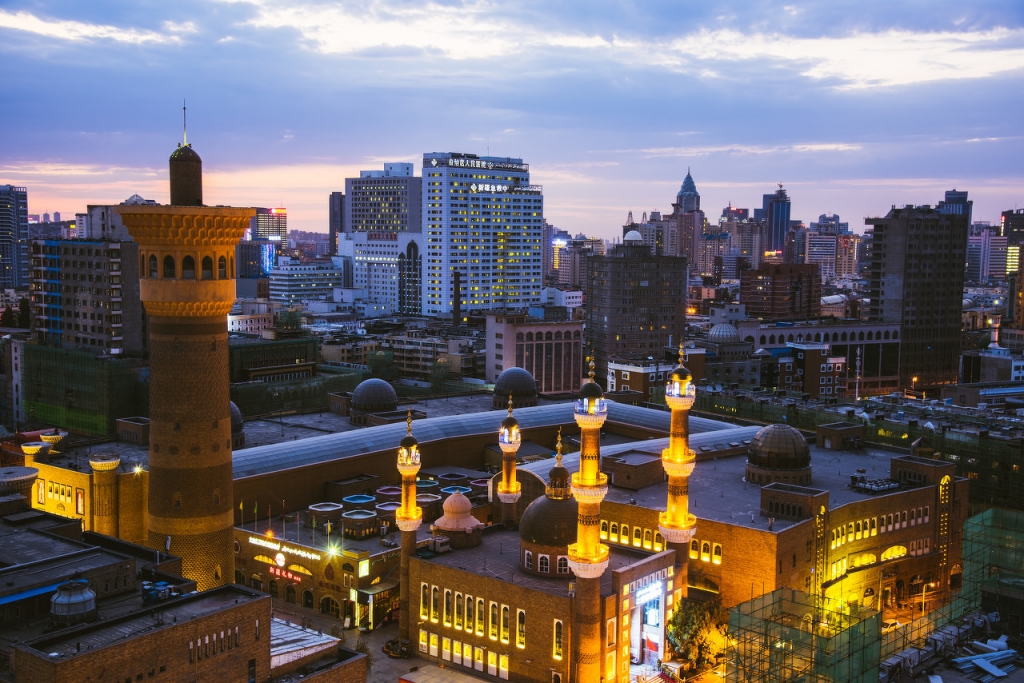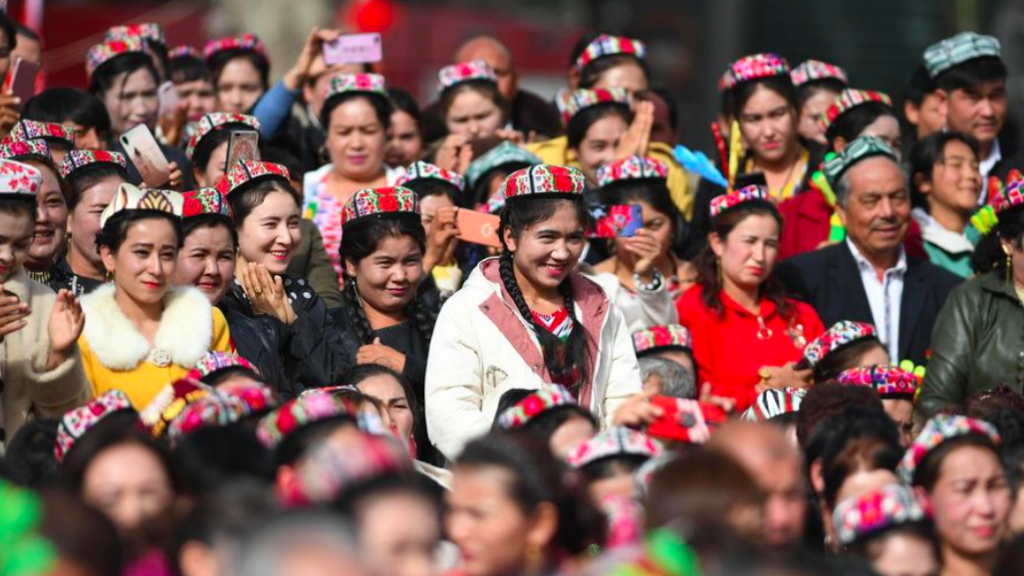Xinjiang’s Progress and Development Can Be Seen by Everyone

China strives to build a better Xinjiang which is united, harmonious, prosperous and progressive, ecologically friendly with people living and working in peace and contentment.
Xinjiang was called the western region in ancient China. Since the Han Dynasty (202 BC-AD 220) it has been part of China’s territory. Since then, the governments of all dynasties exercised jurisdiction over the region, no matter whether the governments were stronger or weaker between times, with a tighter of looser control of the northwest.
In the historical evolution of China’s unification as a multi-ethnic country, people of all ethnic groups in Xinjiang, together with people of the whole country, have jointly developed China’s vast territory and created a diversified and integrated family of the Chinese nation. In the long process of historical development, the fate of Xinjiang has always been closely linked with that of the great motherland and the Chinese nation.
At present, Xinjiang Uygur Autonomous Region – established on October 1, 1955 – has sustained economic development, social harmony and stability, continuous improvement of people’s livelihood, unprecedented prosperity of culture and harmony among different religions. People of all ethnic groups are closely united like pomegranate seeds. Unprecedented achievements have been made in economic and social development and improvement of people’s livelihood. People of all ethnic groups have continuously enhanced their sense of accomplishment, happiness and security.

Economic growth and people’s livelihood improvement
First, Xinjiang’s economic development continues to improve. From 2014 to 2019, the GDP of the autonomous region increased from RMB 919.59 billion yuan to 1,359.71 billion yuan, with an average annual growth rate of 7.2 percent. With the continuous improvement of infrastructure, highways have been built in all prefectures and cities.
Second, people’s lives have improved significantly. From 2014 to 2019, the per capita disposable income of Xinjiang residents increased by 9.1 percent annually. More than 1.69 million apartments for rural people and 1.56 million affordable apartments for urban people have been completed. More than 10 million people have moved to new homes. The level of basic public services in urban and rural areas has been continuously improving. The social security system has been progressively completed, with free medical checks available for the whole population. The conditions of medical facilities in agricultural and pastoral areas have been significantly improved. The standardization rate of township hospitals and village clinics has reached 100 percent. The participation rate of residents’ basic medical insurance has reached 99.7 percent.
Third, decisive achievements have been made in poverty alleviation. By 2019, a total of 2,923,200 people, 3,107 poverty-stricken villages and 22 counties in Xinjiang have been lifted out of poverty. The incidence of poverty decreased from 19.4 percent in 2014 to 1.24 percent. The school dropout rate of children from poor households in the compulsory education stage has dynamically fallen to nearly zero. The participation rates of basic medical insurance and serious illness insurance for poor people have reached 100 percent.
Fourth, the central government’s support and national counterpart aid to Xinjiang keep increasing. From 2014 to 2019, the central government’s transfer payments to Xinjiang Uygur Autonomous Region and Corps increased from 263.69 billion yuan to 422.48 billion yuan, with an average annual growth rate of 10.4 percent and overall support to Xinjiang for more than 2 trillion yuan in six years. Nineteen provinces and cities have strengthened all-round counterpart support to Xinjiang, investing a total of 96.4 billion yuan in aid funds (including the Corps), implementing more than 10,000 aid projects, introducing 1,684 billion yuan of funds from enterprises of supporting provinces and cities, and raising fund of more than 700 billion yuan from central enterprises. People in Xinjiang enjoy social stability and a favourable living and working condition, which lays a solid foundation for long-term stability.

A safe and stable society
The combat of anti-terrorism and anti-extremism in Xinjiang has always been based on rule of law. Xinjiang is eradicating extremism and effectively curbing the breeding and spreading of religious extremism. The interference of religious extremism in sectors of administration, justice, education, marriage and medical care has been effectively curbed, therefore the school enrolment and attendance rates have increased sharply, and people’s awareness of the hazards of religious extremism has been raised significantly.
The local government and people pay attention to “combating and preventing at the same time”. By focusing on improving people’s livelihood, strengthening legal education and publicity, and setting up vocational skills education and training centers (hereinafter referred to as education and training centers) to provide assistance and education, etc., people’s basic human rights are protected from the infringement of terrorism and extremism.
Through education and training, the students have improved their ability to use the national common language to broaden the channels of obtaining modern knowledge and information. By introducing laws, regulations, ethnic policies, religious policies and knowledge, education and training centers enable students to profoundly realize that religious extremism completely violates religious doctrines and recognize the nature and hazard of terrorism and extremism. Through training, the awareness of rule of law is obviously enhanced among students while the spread of religious extremism is consciously resisted.
Xinjiang regards job creation as the most important backbone for people’s livelihood and trust. From 2014 to 2019, the total number of employments in Xinjiang increased from 11.3524 million to 13.3012 million. More than 2.763 million surplus rural labor forces transferred to employment annually. Urban per capita disposable income increased from 23,200 yuan to 34,700 yuan while rural per capita disposable income increased from 8,724 yuan to 13,100 yuan.
China has made a complete policy for Xinjiang Uygur Autonomous Region, namely adherence to the overall goal, governance according to law, unity and stability, enrichment and development through culture, long-term capacity building, modernization of the governance system as the guarantee and more solid endeavors. China strives to build a better Xinjiang which is united, harmonious, prosperous and progressive, ecologically friendly with people living and working in peace and contentment.
The author is Doctor of Laws and Associate Professor at Law School of Xinjiang University.
Translated by Chen Ying
 Facebook
Facebook
 Twitter
Twitter
 Linkedin
Linkedin
 Google +
Google +










